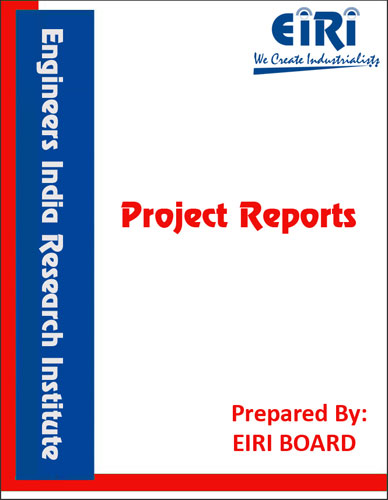DAIRY FARMING (BUFFALOES)
The project report includes Present Market Position and Expected Future Demand, Market Size, Statistics, Trends, SWOT Analysis and Forecasts. Report provides a comprehensive analysis from industry covering detailed reporting and evaluates the position of the industry by providing insights to the SWOT analysis of the industry.
We can prepare PROJECT REPORT as per your INVESTMENT PLAN for BANK LOAN REQUIREMENT and INDUSTRY ANALYSIS. All reports are prepared by highly qualified consultants and verified by a panel of experts.
Have Query? Click Here to Chat
Industry Expert is Online, Chat with him for more detail.

The importance of food science and technology for improving the human beings quality of life is highlighted by the rising search for healthy food, with high nutritional value, available and accessible to people. With this, the investigation of alternative food sources has been the subject of extensive researches in the last decades. Buffalo’s milk is promising in this context, since it has a superior nutritional value due to the high levels of fat, protein and minerals (specially calcium and phosphorus), that can be consumed in natura and may be used as raw material for producing diary products, varying in accordance to each regional culture1, 2 savu. Moreover, buffalos are extremely rustic and demonstrate a high adaptation capacity, being able to survive in diverse environments with huge weather variations, relief and vegetation, so growing them is very economically feasible. More than Five percent of the world’s milk comes from Buffaloes. Buffaloes milk is used in much the same way as cow’s milk. It is high in fats and total solid, which gives it a rich flavour. Many people prefer it to cow’s milk and are willing to pay more for it. In India, where in Mumbai area alone an estimated 10,000 new born calves starved to death each year through lack of milk.
More than Five percent of the world’s milk comes from Buffalloes. Buffalloes milk is used in much the same way as cow’s milk. It is high in fats and total solid, which gives it a rich flavour. Many people prefer it to cow’s milk and are willing to pay more for it. In India, where in Mumbai area alone an estimated 10,000 new born calves starved to death each year through lack of milk. The demand for Buffallo milk in India (About 60% of the milk consumed over 80% in some states) is reflected in the prices paid for a litre of milk; about 130 paisa for cow’s milk compared with about 200 paisa for buffallo milk Twelve of the Eighteen major breeds of buffallo are kept primarily for milk production (although male may be used for traction & all animals are eventually used for meat.). Millions of small and marginal farmers in dairying who own two to three animals and produce an average of 5-7 litres comprise a critical portion of India’s dairy industry. Livestock development in general and dairy development activities in particular are key components of pro-poor development strategies because livestock distribution is much more equitable than land distribution. Thus, changes in the dairying environment have important implications for the smallholder farmers and for poverty reduction. The buffering capacity, pH and viscosity of buffalo milk are higher than those of cow milk. The fermentation and/or ripening process of buffalo milk is generally slower. Butter made from buffalo milk is harder than that of cow milk due to its higher levels of saturated fatty acids. The main milk breeds of India & Pakistan are the murrah, Nile/Ravi,Surti, Mehsana, Nagpure, & Jafarabad.
Each ‘EIRI’ MARKET OVERVIEW CUM DETAILED TECHNO ECONOMIC FEASIBILITY REPORT (Complete Report) tentatively covers
• Introduction
• Properties
• BIS (Bureau of Indian Standard) Specifications & Requirements
• Uses & Applications
• Present Indian Market Overview/Position
• Export & Import Statistics Data
• Names and Addresses of Existing Units (Present Manufactures)
• List of Plant & Machineries
• Miscellaneous Items and Accessories
• Instruments, Laboratory Equipments and Accessories
• Electrification, Electric Load and Water
• Maintenance, Suppliers/Manufacturers of Plant and Machineries
• Dairy farming method
• List of Raw Materials
• Availability of Raw Materials
• Requirement of Staff & Labour
• Personnel Management
• Skilled & Unskilled Labour
• Requirement of Land Area
• Built up Area
• Plant Layout
Along with financial details as under:
• Summary of Capital Cost of Project
• Land & Side Development Exp.
• Buildings
• Plant & Machineries
• Misc. Fixed Assets
• Technical Know how Fees & Exp.
• Preliminary Expenses
• Pre-operative Expenses
• Provision for Contingencies
Below mentioned financial statements (Annexure) will be for 5 to 10 Years
• Annexure:: Cost of Project and Means of Finance
• Annexure:: Output, Profitability and Cash Flow Chart
• Annexure:: Assessment of Working Capital requirements
• Annexure:: Sources of Finance
• Annexure:: Balance Sheets
• Annexure:: Break-Even Analysis and profitability analysis.
• Annexure:: Quantitative Details-Output/Sales/Stocks
• Annexure:: Sales Realisation
• Annexure:: Raw Material Cost
• Annexure:: Other Raw Material Cost
• Annexure:: Packing Material Cost
• Annexure:: Consumables, Store etc.,
• Annexure:: Employees Expenses
• Annexure:: Fuel Expenses
• Annexure:: Power/Electricity Expenses
• Annexure:: Repairs & Maintenance Exp.
• Annexure:: Other Mfg. Expenses
• Annexure:: Administration Expenses
• Annexure:: Selling Expenses
• Annexure:: Depreciation Charges – Profitability
• Annexure:: Depreciation Charges
• Annexure:: Interest and Repayment – Term Loans
• Annexure:: Tax on Profit
• Annexure:: Assumptions for Profitability workings
• Annexure:: Assessment of Working Capital



